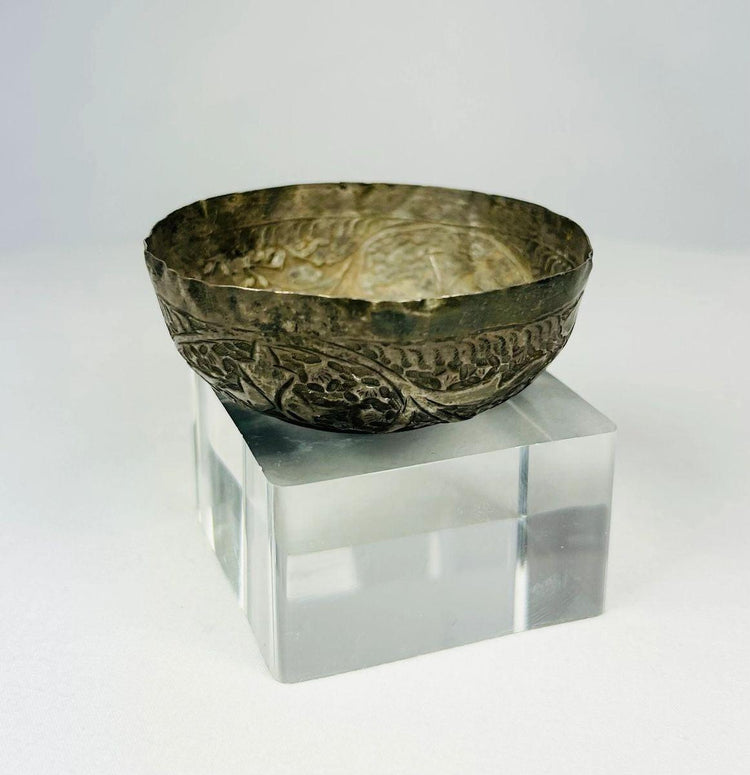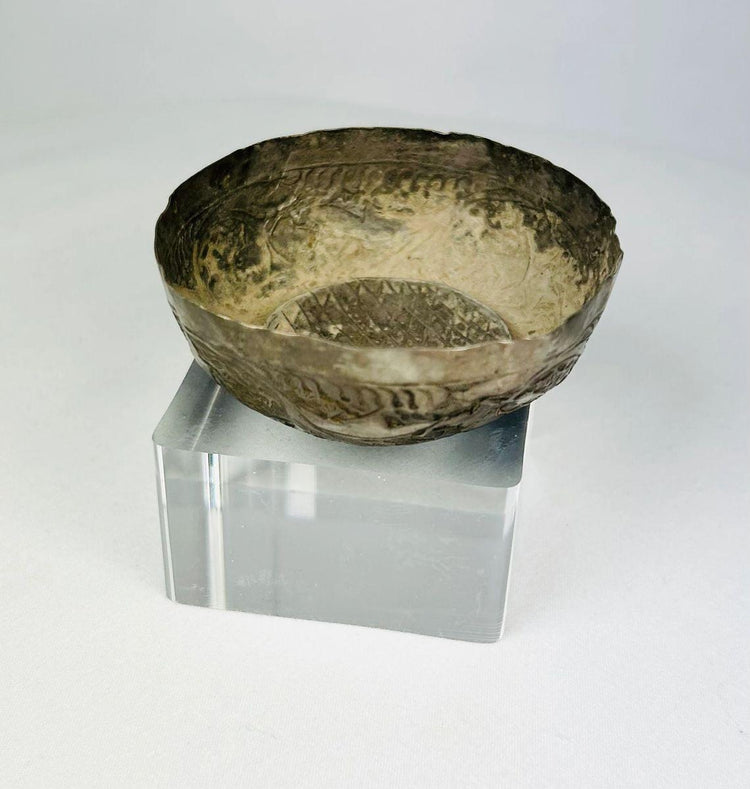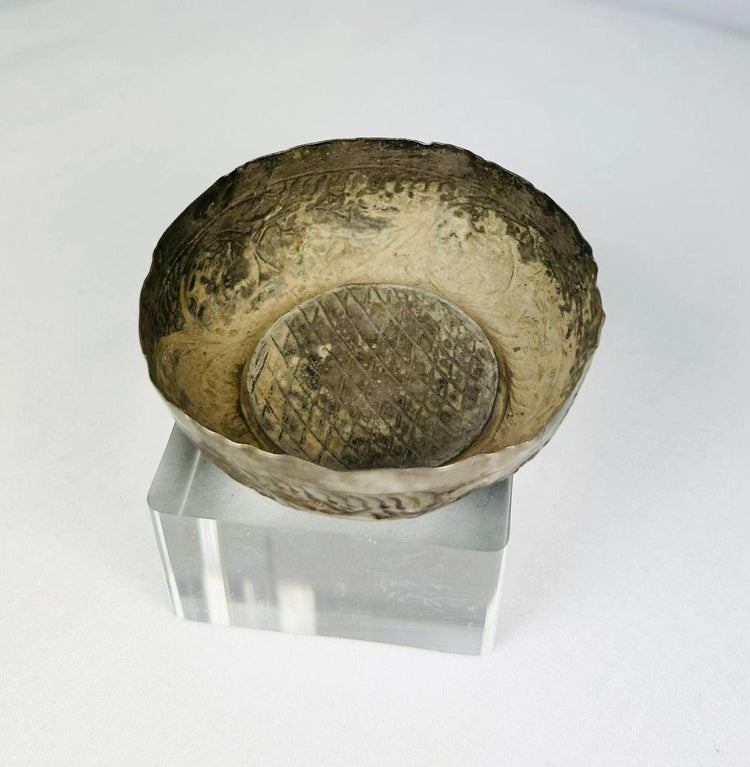Seljuk Silver Unguent Bowl | Engraved Floral & Geometric Motifs | Persia | 12th–13th Century CE
Description
More
Less
Historical Context & Origin
Region: Persia (modern-day Iran, with influence across Anatolia and the Levant)
Material: Silver
Period: Seljuk Period, 12th–13th Century CE
Description
This exquisite silver unguent bowl hails from the Seljuk Empire, a dynasty renowned for its cultural, artistic, and architectural achievements during the medieval Islamic Golden Age. Finely crafted with intricate floral and geometric engravings, the bowl reflects the Seljuk mastery of metalwork and their ability to merge utility with artistry. Such bowls were used for holding precious oils, ointments, or perfumes in both ceremonial and elite domestic contexts, embodying refinement and high status.
Features
- Handcrafted silver bowl with delicate floral and geometric engravings
- Compact form designed for storing oils, ointments, or perfumes
- Slightly irregular rim, a hallmark of authentic hand-forged Seljuk metalwork
- Rich natural patina, enhancing both age and historical character
Cultural Significance
The Seljuk Empire (12th–13th century) was a flourishing center of Islamic art and culture, leaving a lasting legacy across Persia, Anatolia, and beyond. Metalwork such as this bowl not only served practical purposes but also symbolized wealth, sophistication, and the cultural exchanges of the era. The floral and geometric motifs are emblematic of Seljuk artistic expression, highlighting their unique synthesis of beauty, symbolism, and functionality.
Condition
The bowl is well-preserved with subtle signs of wear and age, including a slightly uneven rim. Its surface exhibits a stable silver patina, affirming its centuries-old origin and authenticity.
Dimensions (approximate)
Diameter: 2.5 in
Age
12th–13th Century CE
Learn More
Read More About The Art of Luxury: Metalwork in 12th-Century
View Other Ancient Metalwork in Our Collection: Islamic Khorassan Bronze Inkwell Circa 10-12th Century
Description
Historical Context & Origin
Region: Persia (modern-day Iran, with influence across Anatolia and the Levant)
Material: Silver
Period: Seljuk Period, 12th–13th Century CE
Description
This exquisite silver unguent bowl hails from the Seljuk Empire, a dynasty renowned for its cultural, artistic, and architectural achievements during the medieval Islamic Golden Age. Finely crafted with intricate floral and geometric engravings, the bowl reflects the Seljuk mastery of metalwork and their ability to merge utility with artistry. Such bowls were used for holding precious oils, ointments, or perfumes in both ceremonial and elite domestic contexts, embodying refinement and high status.
Features
- Handcrafted silver bowl with delicate floral and geometric engravings
- Compact form designed for storing oils, ointments, or perfumes
- Slightly irregular rim, a hallmark of authentic hand-forged Seljuk metalwork
- Rich natural patina, enhancing both age and historical character
Cultural Significance
The Seljuk Empire (12th–13th century) was a flourishing center of Islamic art and culture, leaving a lasting legacy across Persia, Anatolia, and beyond. Metalwork such as this bowl not only served practical purposes but also symbolized wealth, sophistication, and the cultural exchanges of the era. The floral and geometric motifs are emblematic of Seljuk artistic expression, highlighting their unique synthesis of beauty, symbolism, and functionality.
Condition
The bowl is well-preserved with subtle signs of wear and age, including a slightly uneven rim. Its surface exhibits a stable silver patina, affirming its centuries-old origin and authenticity.
Dimensions (approximate)
Diameter: 2.5 in
Age
12th–13th Century CE
Learn More
Read More About The Art of Luxury: Metalwork in 12th-Century
View Other Ancient Metalwork in Our Collection: Islamic Khorassan Bronze Inkwell Circa 10-12th Century
You May Also Like























